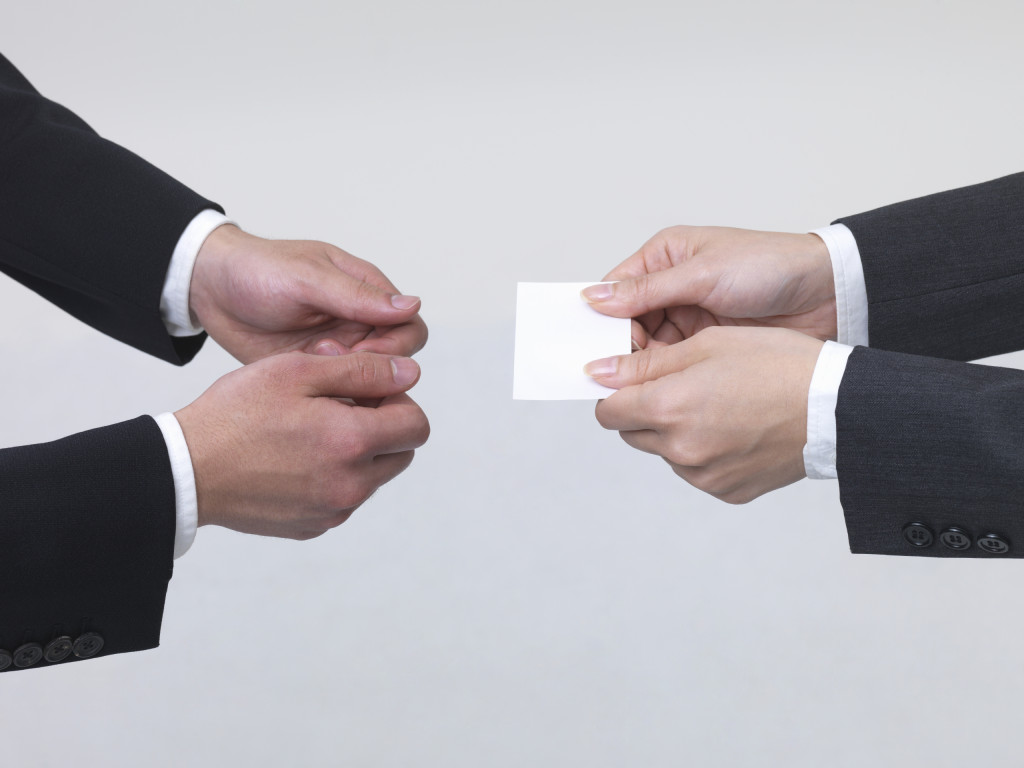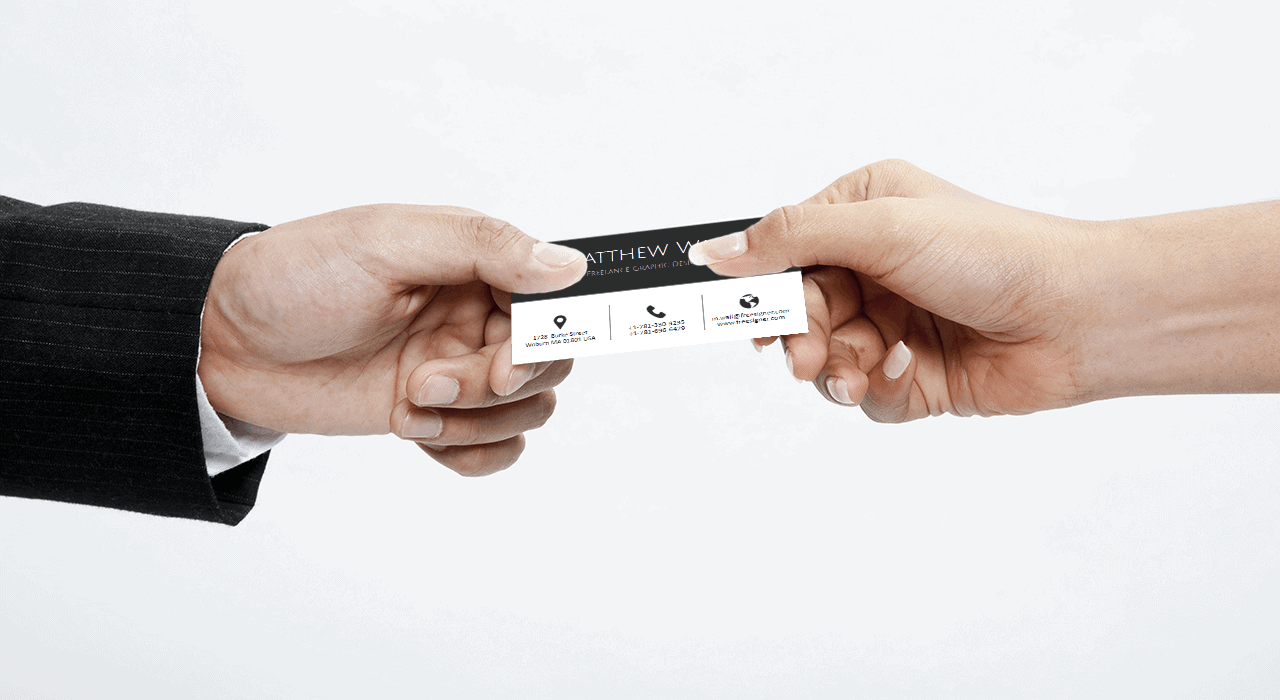
In the fast-paced world of business, networking is a crucial component of success. And one of the most essential tools for networking is the humble business card. While it may seem like a small and insignificant item, a business card holds great power in making lasting impressions. But with power comes responsibility. Knowing the proper etiquette for exchanging and handling business cards is vital in establishing and nurturing fruitful professional relationships. In this guide, we will explore the dos and don’ts of business card etiquette, enabling you to navigate the networking landscape with grace and professionalism.
Why Business Cards Still Matter in the Digital Age

In today’s digital world, where information is easily exchanged through smartphones and email, one might wonder if business cards still hold any relevance. The truth is, they do. Business cards are tangible representations of your brand and serve as a physical reminder for potential clients or partners. They provide a quick and effortless way to share contact information, leaving a lasting impression that an email or text message just can’t achieve.
Creating the Perfect Business Card

Before we delve into the proper etiquette surrounding business cards, it is important to understand the importance of having a well-designed card. Your business card should reflect your brand and leave a positive impression on recipients. Here are a few key elements to consider when creating your business card:
- Clean and professional design: Opt for a clean and professional design that incorporates your branding elements and maintains a consistent visual identity.
- Contact information: Include essential contact details such as your name, job title, phone number, email address, and website. Avoid cluttering the card with unnecessary information.
- Legibility: Ensure that the text on your business card is easily readable. Choose a font that is clear and not too small.
- Quality printing: Invest in high-quality printing to leave a positive impression. Poor print quality can reflect poorly on your brand.
- Use of colors: Select colors that align with your brand and evoke the desired emotions. Be mindful of color combinations that are visually appealing and easy on the eyes.
Remember, your business card is an extension of your brand, so invest time and effort in designing it appropriately.
Exchanging Business Cards: The Do’s and Don’ts
The exchange of business cards is an integral part of networking etiquette. To make the most of this opportunity, follow these guidelines:
Do’s:
- Carry an ample supply: Always have enough business cards with you. Running out of cards can be embarrassing and may give the impression of being unprepared.
- Present the card with intention: When offering someone your card, do so with purpose, handing it to them with both hands facing upwards. This gesture shows respect and acknowledges the importance of the exchange.
- Receive with gratitude: When someone presents you with their card, accept it graciously. Take a moment to read the information and show genuine interest in what they do.
- Treat cards with respect: Handle business cards carefully, holding them by their edges. Avoid writing on someone’s card unless given permission.
- Take notes: Jot down relevant details or a brief reminder of the conversation on the back of the received business card. This will help you recall important information when following up with the contact later on.
- Follow up promptly: Reach out to new contacts within a few days of the initial meeting. This demonstrates your professionalism and strengthens the connection you established.
Don’ts:
- Force your card on others: Only offer your business card when someone expresses genuine interest in connecting or requests it. Pushing your card onto someone can come across as aggressive or desperate.
- Hand out damaged cards: Ensure your business cards are clean and free of creases or tears. Handing out damaged cards can reflect poorly on your attention to detail and professionalism.
- Rush through an exchange: Take the time to engage in a brief conversation before exchanging business cards. Building a rapport will make the exchange more meaningful, setting a positive foundation for future interactions.
- Staple or write on another person’s card: Avoid stapling your card to someone else’s or writing notes on their card without permission. Preserving the integrity of their card shows respect for their professional image.
By following these do’s and don’ts when exchanging business cards, you will make a positive and lasting impression while establishing a solid networking foundation.
Handling Business Cards Received: Best Practices

The way you handle the business cards you receive also reflects on your professionalism and attention to detail. Here are some best practices to follow:
- Read the card: Take a few moments to read and acknowledge the information on the received business card. Ensure that you pronounce their name correctly or ask for clarification if needed.
- Express interest: Show genuine interest in their business or profession. Asking follow-up questions or making relevant comments demonstrates attentiveness and helps build a connection.
- Store cards with care: After receiving a business card, carefully store it in a cardholder or a designated pocket in your wallet. Avoid crumpling or folding received cards, as this can be seen as disrespectful.
- Avoid mixing cards: Organize the business cards you receive in a way that allows easy retrieval later. Mixing them together may result in confusion and make it challenging to find specific contacts.
- Use the information promptly: Follow up on potential business opportunities or send a quick thank-you note to show appreciation and maintain the connection.
Properly handling the business cards you receive portrays your professionalism and respect for the individual and their business.
Conclusion: Mastering Business Card Etiquette for Effective Networking

Mastering the art of business card etiquette is essential for effective networking. These small but powerful tools can make a significant impact on both personal and professional relationships. By understanding the do’s and don’ts of exchanging and handling business cards, you demonstrate respect, professionalism, and attention to detail. Remember, your business card is a direct reflection of your brand, so invest time in creating a well-designed card that stands out. By incorporating these etiquette guidelines into your networking routine, you’ll leave lasting impressions, strengthen connections, and position yourself for continued success in the business world.
Isabella, a branding guru, merges her love for storytelling with her marketing expertise. Her fascination with cultural diversity and travel lends a global perspective to her writing about business cards and graphic design. In her free time, she explores new cuisines and documents her culinary adventures.